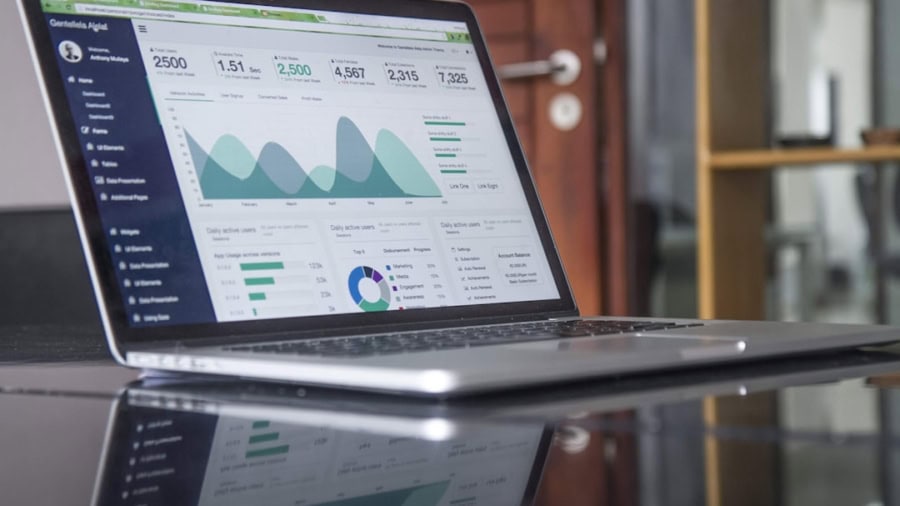The advent of technology has transformed the educational landscape, particularly with the rise of virtual classrooms. Smart analytics, a data-driven approach that leverages advanced algorithms and machine learning, has emerged as a pivotal tool in enhancing the learning experience in these digital environments. By collecting and analyzing vast amounts of data generated during online classes, smart analytics provides educators with insights that were previously unattainable.
This technology not only helps in understanding student performance but also aids in personalizing learning experiences to cater to individual needs. In virtual classrooms, where traditional face-to-face interactions are limited, the role of smart analytics becomes even more critical. It enables educators to track engagement levels, assess comprehension, and identify areas where students may be struggling.
For instance, by analyzing participation rates in discussions or the time spent on various learning materials, instructors can gain a clearer picture of student engagement. This data-driven approach allows for timely interventions and tailored support, ultimately fostering a more effective learning environment.
Key Takeaways
- Smart analytics in virtual classrooms can revolutionize the way feedback is provided to students and improve the learning experience.
- Feedback is crucial in virtual learning as it helps students understand their progress and areas for improvement.
- Smart analytics can provide personalized and timely feedback to students, leading to better learning outcomes.
- Challenges of smart analytics in virtual classrooms include data privacy concerns and the need for effective teacher training.
- Artificial intelligence plays a key role in smart analytics for feedback by analyzing large amounts of data and providing insights for personalized feedback.
The Importance of Feedback in Virtual Learning
Feedback is a cornerstone of effective learning, serving as a vital mechanism for students to understand their progress and areas for improvement. In virtual learning environments, where direct interaction is often reduced, the need for timely and constructive feedback becomes even more pronounced. Feedback not only reinforces learning but also motivates students to engage more deeply with the material.
Moreover, feedback in virtual classrooms can take various forms, including peer reviews, automated assessments, and instructor comments. Each type plays a unique role in the learning process.
For example, peer feedback encourages collaboration and critical thinking among students, while instructor feedback offers expert insights that can significantly influence a student’s understanding of complex concepts. The challenge lies in ensuring that feedback is not only timely but also actionable, allowing students to make meaningful adjustments to their learning strategies.
Advantages of Smart Analytics for Providing Feedback

Smart analytics offers several advantages when it comes to delivering feedback in virtual classrooms. One of the most significant benefits is the ability to provide real-time insights into student performance. Traditional feedback mechanisms often rely on periodic assessments, which can delay the identification of learning gaps.
In contrast, smart analytics continuously monitors student interactions and engagement levels, enabling educators to offer immediate feedback that can enhance learning outcomes. Additionally, smart analytics can personalize feedback based on individual student data. By analyzing patterns in a student’s performance, educators can tailor their feedback to address specific challenges faced by that student.
For instance, if a student consistently struggles with a particular topic, smart analytics can flag this issue and prompt the instructor to provide targeted resources or additional support. This level of personalization not only improves the relevance of the feedback but also fosters a sense of connection between students and educators, which is crucial in a virtual setting.
Challenges and Limitations of Smart Analytics in Virtual Classrooms
Despite its numerous advantages, the implementation of smart analytics in virtual classrooms is not without challenges. One significant limitation is the potential for data overload. With vast amounts of data being generated from various sources—such as discussion forums, quizzes, and video lectures—educators may find it overwhelming to sift through this information to extract meaningful insights.
This can lead to analysis paralysis, where the sheer volume of data hinders timely decision-making. Another challenge is ensuring data privacy and security. As educational institutions increasingly rely on data analytics, concerns about how student data is collected, stored, and used become paramount.
Institutions must navigate complex regulations regarding data protection while also maintaining transparency with students about how their information is utilized. Failure to address these concerns can erode trust between students and educators, ultimately undermining the effectiveness of smart analytics in enhancing the learning experience.
The Role of Artificial Intelligence in Smart Analytics for Feedback
Artificial intelligence (AI) plays a transformative role in enhancing smart analytics within virtual classrooms. By employing machine learning algorithms, AI can analyze student data at an unprecedented scale and speed, identifying trends and patterns that may not be immediately apparent to human educators. For instance, AI can predict which students are at risk of falling behind based on their engagement metrics and performance history, allowing for proactive interventions.
Moreover, AI-driven tools can automate the feedback process by generating personalized responses based on individual student performance. These tools can assess assignments and quizzes, providing instant feedback that helps students understand their mistakes and learn from them. This not only saves educators time but also ensures that students receive timely guidance that can significantly impact their learning trajectory.
As AI continues to evolve, its integration into smart analytics will likely lead to even more sophisticated feedback mechanisms that further enhance the virtual learning experience.
Future Developments and Innovations in Smart Analytics for Virtual Classrooms

The future of smart analytics in virtual classrooms is poised for significant advancements as technology continues to evolve.
By identifying at-risk students early on, educators can implement targeted interventions that improve retention rates and overall academic success.
Additionally, advancements in natural language processing (NLP) are set to revolutionize how feedback is delivered in virtual classrooms. NLP technologies can analyze student responses in real-time, providing immediate insights into comprehension levels and areas needing clarification. This capability allows for dynamic feedback that adapts to student needs as they progress through their coursework.
Furthermore, as virtual reality (VR) and augmented reality (AR) technologies become more prevalent in education, smart analytics will likely evolve to include immersive learning experiences. These technologies can create engaging environments where students interact with content in novel ways while still benefiting from data-driven insights that enhance their understanding and retention of material.
Best Practices for Implementing Smart Analytics in Virtual Classrooms
To effectively implement smart analytics in virtual classrooms, educational institutions should adhere to several best practices. First and foremost is the establishment of clear objectives for what they hope to achieve through analytics. Whether the goal is to improve student engagement or enhance academic performance, having defined objectives will guide the selection of appropriate tools and metrics.
Training educators on how to interpret and utilize data effectively is another crucial step. Educators must be equipped with the skills necessary to analyze data meaningfully and translate those insights into actionable strategies for improving student outcomes. Professional development programs focused on data literacy can empower educators to leverage smart analytics confidently.
Additionally, fostering a culture of collaboration among educators can enhance the effectiveness of smart analytics initiatives. By sharing insights and strategies derived from data analysis, educators can collectively address common challenges faced by students. This collaborative approach not only enriches the learning environment but also ensures that feedback mechanisms are comprehensive and inclusive.
The Impact of Smart Analytics on the Future of Virtual Learning
The integration of smart analytics into virtual classrooms represents a paradigm shift in how education is delivered and experienced. By harnessing the power of data-driven insights, educators can provide personalized feedback that enhances student engagement and fosters academic success. While challenges such as data overload and privacy concerns exist, the potential benefits far outweigh these limitations when implemented thoughtfully.
As technology continues to advance, the role of smart analytics will only grow more significant in shaping the future of virtual learning environments. With innovations such as AI-driven feedback systems and predictive analytics on the horizon, educational institutions have an unprecedented opportunity to transform their approaches to teaching and learning. Ultimately, smart analytics holds the promise of creating more responsive and effective educational experiences that cater to the diverse needs of learners in an increasingly digital world.
In a recent article discussing the future of smart analytics in virtual classrooms for better feedback, it is important to consider the role of technology in education. As highlighted in this article on the best tablets for business in 2023, the use of tablets and other devices can greatly enhance the learning experience for students. By incorporating the latest software and tools, educators can provide more personalized feedback and support to help students succeed in their academic endeavors.
FAQs
What are smart analytics in virtual classrooms?
Smart analytics in virtual classrooms refer to the use of advanced data analysis and artificial intelligence to track and analyze student performance, engagement, and behavior in online learning environments. This technology allows educators to gain insights into student learning patterns and provide personalized feedback and support.
How can smart analytics improve feedback in virtual classrooms?
Smart analytics can improve feedback in virtual classrooms by providing educators with real-time data on student performance, allowing them to identify areas of struggle and provide targeted support. This technology also enables personalized feedback based on individual learning needs, leading to more effective and meaningful guidance for students.
What are the benefits of using smart analytics for feedback in virtual classrooms?
Some benefits of using smart analytics for feedback in virtual classrooms include improved student engagement, enhanced learning outcomes, and more efficient use of educators’ time. Additionally, smart analytics can help identify at-risk students and provide early interventions to support their academic success.
What are some potential challenges of implementing smart analytics in virtual classrooms?
Challenges of implementing smart analytics in virtual classrooms may include concerns about data privacy and security, the need for educator training on how to effectively use the technology, and potential resistance to change from students and educators. Additionally, there may be limitations in the accuracy and reliability of the data collected by smart analytics tools.

